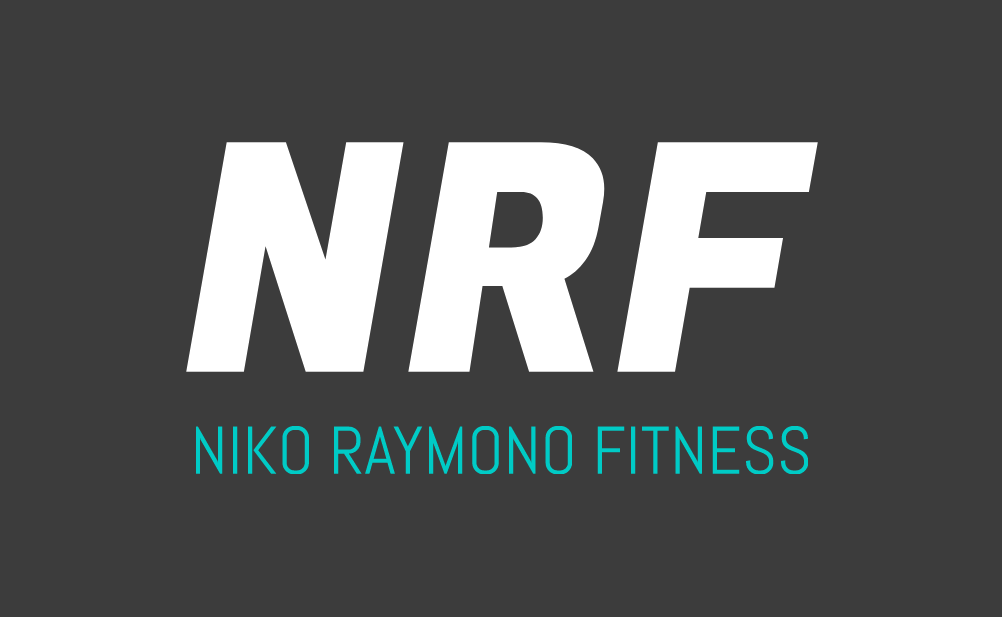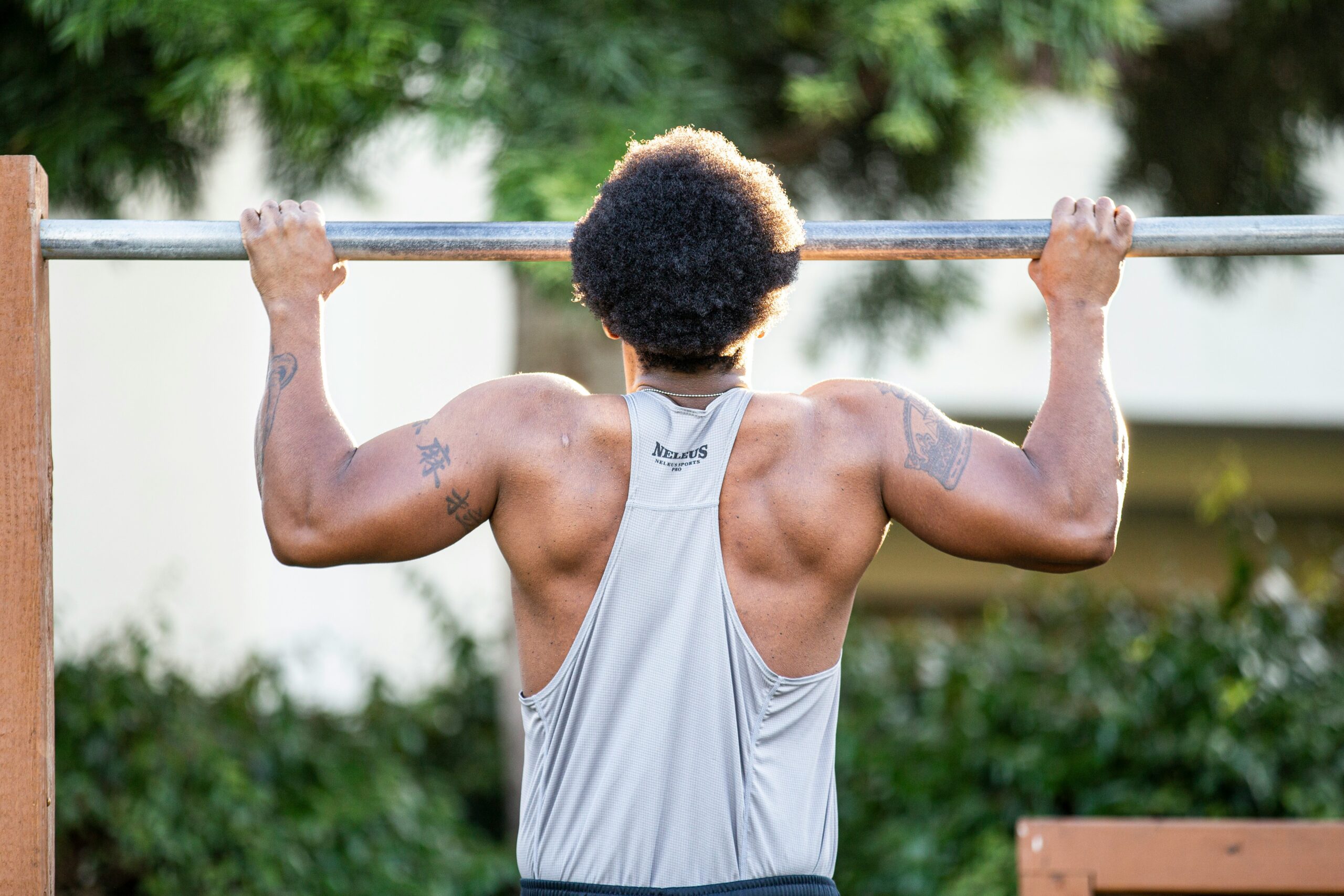What are the best calisthenics based exercises necessary to train and grow the biceps muscle? Here are my top five picks for strength and endurance.
Incorporating calisthenics into your workout routine can be a highly effective way to train your biceps. By utilizing calisthenics as the base for training specific muscle groups, or as an addition to other training programs, you can build muscle and increase strength, size and endurance. Furthermore, most calisthenics based biceps routines will also act as a compound exercise. Compound exercises are beneficial because they simultaneously train multiple muscle groups. For most biceps focused calisthenics routines, you can expect to increase the overall strength and size of your back and forearms as well.
1. Pull-ups
Pull-ups can be an excellent way to train the biceps muscle for a couple of reasons. First, pull-ups relies heavily on several upper body muscles including latissimus doors (large, upper back muscles), biceps brachia (front portion of the upper arm) and rear deltoids. Although a challenging exercise for beginners, pull-up volume can quickly be increased by following a simple ladder or pyramid style approach to doing them. Start with one rep, then two, then three, etc. Once you reach failure begin doing reps in reverse order until you return to one rep. Adding a resistance band to the bar, you can train assisted pull-ups, increasing total volume while placing less stress on the back and shoulders. By doing so, the biceps muscle becomes somewhat isolated and can lead to a better pump and more endurance training. Adding a weighted vest to your pull-up routine will result in more strength gains and overall size of the biceps and associated muscle groups.
How To: Start by placing your hands slightly wider than shoulder length on the bar, palms outward, and hang from the bar with your head and legs straight. Engage your back and biceps, and pull your chest up towards the bar. Thousands of pull-ups later I have learned that instead of pulling your chin to the bar, a better mentality is to envision you are trying to pull your elbows to the ground without letting go of the bar. This has, for me at least, improved my mind to muscle connection.
2. Chin-ups
Similar to pull-ups, chin ups is one of the best ways to train your biceps through calisthenics. This exercise, however, differs in that your palms are facing inward (towards yourself) instead of outward. This small difference results in substantially less stress on the back and shoulder muscles and much more strain on the biceps. For most people, chin ups are easier than pull-ups, but will burn out your biceps faster than doing pull-ups. I recommend chin-ups over pull-ups if you are intentionally trying to isolate the biceps vice training multiple muscle groups at the same time. Again, a simple ladder or pyramid style workout can be effective for training the biceps with this exercise.
How To: Place your hands on the bar facing towards you. I have found that placing your hands outside of shoulder width will activate your lats more whereas placing your hands closer together will isolate the biceps muscles more. Pull your chin over the bar and slowly lower yourself down.
3. Resistance Band Curls
Unlike pull-ups and chin ups that target multiple muscle groups, resistance band curls are an isolation exercise that will only train the biceps. Resistance band curls are an incredibly effective method to build muscular endurance and get a great bicep pump. It may be hard to build mass unless you have access to multiple bands of varying resistance (how heavy the band feels when you curl it). I typically use this exercise as a supplement to compound exercises, or as a way to burn out the biceps at the end of a workout.
How To: To do this exercise, start by placing the band under both feet and extending it up to the waist area. Ensure there is ample tension in the band and curl your fists to your caller bone. Focus on a slow decline and keep your elbows pinned to your side. Alternate methods of resistance band curls includes curling with one arm at a time or adjusting your grip to palms facing each other to simulate a hammer curl.
4. Reverse Push-up
Although requiring no special equipment, reverse pushups are by far the most challenging exercise on this list. Reverse pushups require an array of supplemental muscle groups including upper back, glutes and core strength while also training forearms and biceps. When first starting out, beginner to intermediate level athletes should expect to focus more on form through slower, low rep sets. Doing the exercise correctly can have a strong impact on both bicep strength and endurance.
How To: Start in the pushup position with your hand inverted so that your fingers are pointed backwards. Slowly bend at the elbows while keeping your head facing forward. As you begin to develop strength and form, it will become easier to return to the pushup position. For beginners or those seeking to do this exercise with higher volume, I recommend doing the exercise on an incline. In doing so less core stability is required, allowing you to focus on the mind to muscle connection with your biceps.
5. Ring Curl
The final calisthenics based biceps exercise is the ring curl. This exercise is ideal for athletes who are looking to build core stability strength on top of bicep strength. It is easy enough for a beginner to learn and implement into their routine immediately, but still challenging enough for intermediate and advanced athletes to benefit from. The ring curl highlighs the curling motion as the primary movement, but requires engagement from the glutes and abs to stabilize the core. Additionally, the ring curl is especially good at engaging the forearm muscles when done properly. It is a solid, well rounded calisthenics exercise that can be used to train the biceps throughout a greater range of motion, enhancing overall muscle activation. Additionally, the ring curl will improve grip strength more so than a curl bar or dumbbell will.
To do a ring curl, start by planting your feet under the rings and loweringyourself back. Keep your elbows tight to your body and curl yourself upright. Implementing negative reps by slowly lowering yourself into the down position can add extra strain to the bicep, increasing overall strength over time. Placing your feet on an elevated surface can make the exercise more or less challenging depending on how far out from the rings they are.
Overall, calisthenics is an excellent for of training, especially for targeting the biceps. Minimal equipment is needed, technique is easy to learn and the exercises can be altered based on an individual’s level of experience for more progressive training over time. The biceps are a small muscle group and can easily become injured if they are isolated too much. Through calisthenics based training, targeting the biceps also engages several other larger muscle groups to mitigate risk for injury while still working the biceps thoroughly.


One response to “The 5 Best Calisthenics Exercises to Grow Your Biceps”
[…] Click here for the best calisthenics based biceps exercises […]